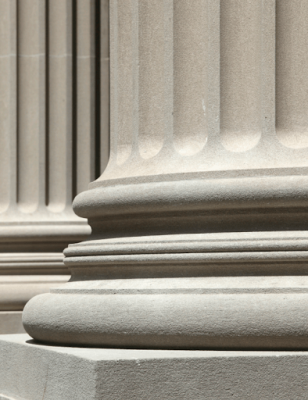Understanding Pricing in the U.S.
White Paper Series No. 2012-1
Understanding Pricing in the U.S. – Alcohol Beverages
About our white papers: American Spirits Exchange white papers are periodic publications issued by the company to inform the industry that it proudly serves. All information is provided ‘as is’ and not intended to provide tax, legal or other advice. If you have any questions or comments about this or any other of our publications please contact our offices at 215-240-6020.
Copyright 2012. All rights reserved.
Printed in the United States of America. No part of this paper may be used or reproduced in any many whatsoever without written permission.
The following provides an overview of the general expenses and supply chain margins (i.e. distribution) for alcohol beverages in the United States. Specifics about individual state taxes, mark-ups and responsibilities vary considerably by the type of beverage, its alcohol content and the state it is being sold into.
A PRACTICAL EXAMPLE
The following example assumes production of a standard bottle of vodka (750ml and 40% ABV). What is listed is simply an example and each component will vary considerably based upon the individual product and business model. A discussion of each line item follows with expected ranges, where applicable, for new products.
DESCRIPTION OF CATEGORIES
COGS
Suppliers production costs: total cost of production, preparation of products for sale and any other relevant factors.
FET
Federal Excise/Import tax on alcohol beverages. FET rates vary by type of spirit and alcohol by volume. FET needs to be paid before a product can be shipped (hence we recommend counting it as a component of COGs).
For domestically produced products the distillery will file the appropriate paperwork and arrange payment prior to shipping. For an imported product, a customs broker will file the paperwork and arrange payment for a fee.
For imported products either the FET can be paid upon importation, or the product can be placed in a bonded warehouse, an action that postpones payment of FET and customs duties until the paperwork is filed (generally shortly before the product ships). Although the later limits working capital outlay at the time of import, the supplier is still fully responsible for all taxes. Bonded storage tends to be more expensive and each time cases of product are transferred from bond to non-bond for transport a customs broker needs to be engaged, at a fixed cost, to file the appropriate paperwork.
Also, imported products have various U.S. customs fees and duties associated with importation, in addition to FET.
FOB Pricing
The price that you intend to charge your wholesaler. Pricing is almost always done FOB based upon picking the product up at the supplier’s facility (e.g. distillery, warehouse).
FOB Price – COGs = Gross Profit. Gross Profit needs to cover all of the fixed costs of production (e.g. shipping, warehousing, pallet for shipping), administrative oversight, sales and marketing and end-of-day profits. In general, the industry standard is about 50% gross margin… although higher is always better.
Exceptions to FOB pricing occur with control states that expect pricing based upon delivery to their warehouse.
Freight to Wholesaler
Transportation costs from supplier’s facility to wholesaler’s warehouse. These freight costs are paid by the wholesaler who will then factor them into their cost of goods. Control states frequently expect pricing to include all freight charges required to land the product at their warehouse.
State Excise Tax
State excise tax on alcohol (not consumer sales tax). This is arranged and paid by the wholesaler who includes it as part of their cost of goods. State excise taxes vary by type of alcohol beverage and the amount of alcohol by volume.
Laid In Cost
The total cost to a wholesaler to purchase the product suitable for sale in their market.
Wholesalers’ Margin
Wholesaler’s margins vary tremendously based upon the type of product (e.g. wine versus spirits), individual wholesaler, co-marketing spend and so forth. For spirits, one can expect percentages in the low 20s upwards of 40; for a new brand, you can expect 30-35% as an average. For their margin wholesalers will work with retailers to sell, deliver and invoice.
ADDITIONAL RESOURCES
The following additional resources are available from The American Spirits Exchange and may be useful:
- Federal Excise Tax Rates, which includes the U.S. government conversion standards.
- State Excise Tax Rates, note that these change frequently and while appropriate for planning purposes may not always be up to date. NABCA Standard Price Quotation Form, the official price mark-up sheet for many control states.
- Consumer Price Calculator. This program calculates the end consumer price for a product based upon supplier input such as type of product, product specifications, negotiated margins and the state in which it is to be sold.
- Import Price Calculator. This program does two things: 1) estimates the price of importation for alcohol beverage products; and 2) calculates the taxes and duties required for bond withdraws, either at the time of importation or thereafter.
The American Spirits Exchange Ltd.
We believe that success is measured in terms of our clients’ growth. We bring a contemporary, best-practice approach to a deeply historical industry. Our clients don’t just beat their competitors, they change the rules of the game.
Who we work with
Our clients are typically visionary leaders with bold, forward-thinking strategies. Whether emerging or multi-national, domestic or international they eschew the status-quo.
What we do
We help companies save money while increasing their sales focus;, the result is increased case sales and sustained corporate growth. We provide a permitted foundation and take responsibility for streamlining purchase order processing and compliance. Where appropriate, we make strategic and operational recommendations to help them get more out of their business model.
How we do it
We are part of your team. We focus on practical actions that drive your business forward. We get our hands dirty.



